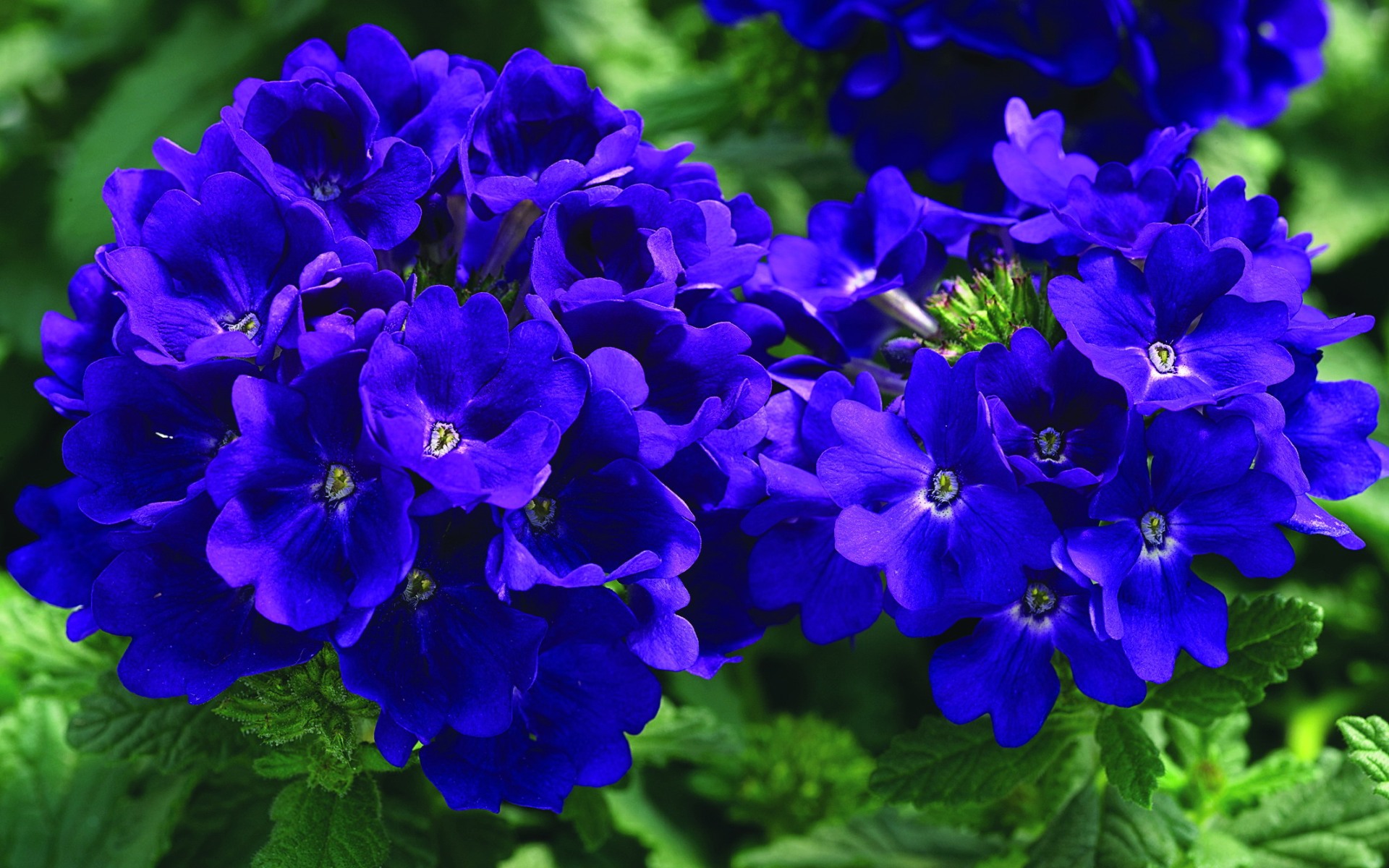The beautiful and unpretentious verbena plant has been known since ancient times. In Greece and the Roman Empire, wreaths were woven from verbena for rulers and officials, and in Egypt it was valued for its medicinal properties. Nowadays, a plant with a long history is used for decorative purposes. Verbena is valued by gardeners for its bright and elegant flowers that bloom all summer until the very frost.
Content
Verbena: description and varieties
Verbena is considered a herb, but it can also grow as a bush. Depending on the variety, it can grow from 8 to 50 cm... The green thin leaves of the plant are lanceolate. They are located on both sides of the stems. Verbena has small flowers. They have five petals and can be purple, apricot, red, lilac, pink or white.
Verbena is popular as an annual garden plant, which is used in rock gardens, curbs and ridges. The bushes planted in hanging baskets are ideal for vertical landscaping.
Wild verbena is used in folk medicine to treat nervous disorders and fever, and is used to make perfumes and relaxing teas.
Of the approximately 250 varieties of verbena, only a few are used for decorative purposes.
Verbena species
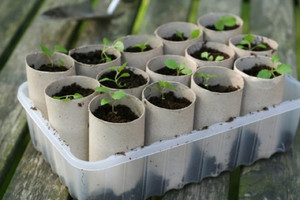 Verbena hard is distinguished by creeping or ascending branched stems. On her wedge-shaped hard leaves convex veins are located... Complex inflorescences are collected from lilac and lilac flowers and have a diameter of 3.5 cm. The collected seeds of the plant do not lose their germination for five years.
Verbena hard is distinguished by creeping or ascending branched stems. On her wedge-shaped hard leaves convex veins are located... Complex inflorescences are collected from lilac and lilac flowers and have a diameter of 3.5 cm. The collected seeds of the plant do not lose their germination for five years.
Verbena canadensis is a thermophilic perennial growing up to 15-20 cm. On its thin stems there are oval deeply divided leaves with sharp tips. The umbrella-shaped inflorescence consists of many flowers of pink, white, lilac or lilac. The plant reproduces by self-seeding. The collected seeds remain viable for three years.
Verbena Buenos Aires is heat-loving bush plant, growing up to 120 cm. It has a pronounced main stem, from which lateral shoots grow. Elongated lanceolate leaves have serrated edges. Small amethyst flowers collected in spikelets form umbellate inflorescences. Buenos Aires verbena blooms long and profusely.
Verbena straight is the only perennial of all types of verbena, which is grown in the middle lane. It grows up to one and a half meters and is distinguished by grayish-green sessile leaves 9 cm long. On an inflorescence 40 cm long, violet-blue flowers are collected. This type of verbena does not bloom for very long.
Verbena hybrid - This is the most popular type of verbena among gardeners. The plant grows up to 20-50 cm, and has erect or creeping strongly branching stems. Oblong or elongated triangular leaves are pubescent with bristles. Fragrant flowers collected in umbrella-shaped inflorescences can be purple, dark purple, white, pink and other colors.Verbena hybrid can be large-flowered or low compact. The most popular plant varieties:
- Moon River is an ampelous plant with shoots up to 45 cm. The inflorescences are densely covered with lavender flowers.
- Imagination is distinguished by branching shoots that grow up to 150 cm. Violet-purple flowers form inflorescences in the form of a ball. It is used as a ground cover and ampel plant.
- Spectrum Mouth belongs to the low, compact types of vervain. It grows up to 25-30 cm, and has dark scarlet velvet flowers. Dense inflorescences can be up to 6 cm in diameter.
- Ruby is a plant, which is a hemispherical bushes, growing up to 20-25 cm. Dense inflorescences are collected from purple-red flowers up to two centimeters in diameter.
- Etna belongs to the large-flowered or mammoth verbena species. It grows up to 40-45 cm, and blooms with scarlet-red flowers with cream-colored eyes. One inflorescence can contain about 50 flowers.
- Cyclops is distinguished by its dark blue flowers with a white eye. The height of the inflorescence is about 7 cm, and the bush itself grows up to 30-40 cm.
How to grow verbena from seeds?
Most often, it is used to decorate a personal or summer cottage verbena hybrid... Growing this plant from seeds at home is not difficult, but some recommendations are required.
Sowing seeds
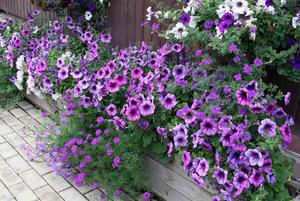 Some gardeners are advised to start growing seedlings from seeds as early as January. It will be ready for planting in the ground in March, that is, when there is still snow in the yard. Therefore, in most regions of our country, it is recommended to plant verbena seeds in March or April.
Some gardeners are advised to start growing seedlings from seeds as early as January. It will be ready for planting in the ground in March, that is, when there is still snow in the yard. Therefore, in most regions of our country, it is recommended to plant verbena seeds in March or April.
For sowing seeds, you need to prepare a shallow container and light humus soil... Some verbena seeds are covered with a very dense shell, so it is recommended to cold process them before sowing, that is, stratify them. For this, the seeds wrapped in a damp cloth and a plastic bag are placed for four days in the vegetable section of the refrigerator.
Seeds ready for planting are sown in moistened soil and covered with a thin layer of earth. The boxes are covered with glass or polyethylene on top. As a result, greenhouse conditions are obtained for seed germination, in which they will grow together. Seedling boxes are placed in a shaded place with an air temperature of 18-25 degrees.
When the first seedlings emerge, the containers will need to be rearranged to a cooler, but well-lit place without direct sunlight.
Growing and caring for seedlings
Seedling care is in timely watering and feeding... The first time you need to fertilize seedlings is two weeks after the emergence of seedlings. For this, special complex fertilizers are used.
When the first pair of true leaves appears on the seedlings, they will need to be planted in separate pots and sprayed with Epin solution for the best adaptation. A few days after transplanting, the seedlings are fed with mineral fertilizers.
In order for the plants to bush well, their tops are pinched over the fifth leaf. It is not necessary to pinch undersized varieties.
With the onset of warm days, the grown seedlings need to be hardened by taking out pots with flowers to the open air. They need to be shaded from direct sunlight.
Planting seedlings in open ground
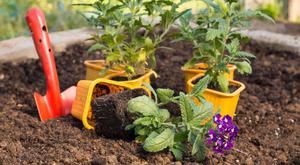 After warm weather is established, the seedlings can be planted in open ground. The plant loves well-lit areas. The hardened bushes can even withstand direct sunlight.
After warm weather is established, the seedlings can be planted in open ground. The plant loves well-lit areas. The hardened bushes can even withstand direct sunlight.
When preparing a place for growing verbena, you need to dig up the soil and add fertilizers to it. For 1 sq. meter of land is added:
- ½ bucket of humus;
- 50 g of ammonium nitrosphate;
- 1 glass of ash.
The distance between the holes depends on the plant variety being planted. It should be at least 25 cm. The bushes should be planted together with a lump of earth. The planted plant is watered, and the earth around it is sprinkled with mulch.
Growing verbena from cuttings
Since the plant is a perennial, it can bloom next year. However, verbena does not tolerate cold winters well, therefore, in order to preserve the plant, the bushes are dug out.
The plant dug out together with a lump of earth is stored in a room with an air temperature of up to +10 degrees until spring. In the spring, cuttings are cut from the bushes. For this, the tops of the shoots are cut off, on which there must be at least four pairs of leaves. The lower leaves break off, and the cuts sprinkled with crushed coal.
Prepared cuttings are planted in containers filled with a mixture of peat and sand. Seedling boxes are covered with foil and placed in a warm room in a well-lit place. After the seedlings have taken root, they must be transplanted into separate pots. Overgrown bushes are planted in open ground at the end of May.
Flowers dug up in the fall can be kept at room temperature, while not forgetting to water and feed them. In this case, cuttings can be carried out at any time of the year.
Growing verbena outdoors
It is not difficult to care for verbena, but its cultivation requires compliance some simple rules:
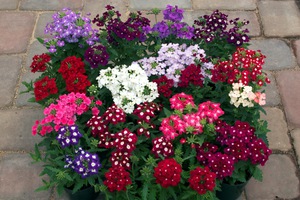 During flowering and active growth, the plant is regularly watered.
During flowering and active growth, the plant is regularly watered.- After abundant watering during extreme heat, the soil under the bushes must be loosened, while removing the weeds.
- Between the plants grown by the group, weeds are removed only for the first time. After the bushes have grown, there will be practically no weeds between them.
- Organic fertilizers need to be applied once a season. More often organics cannot be fed, since an excess of nitrogen leads to the growth of leaves, and the cessation of flowering.
- Bushes are fed with complex mineral fertilizers three or four times per season.
- Faded and wilted flowers should be removed regularly. This will help prolong the flowering of the plant, which will last until frost.
To get a verbena carpet in your garden, shoots plants need to be bent to the ground, and with the help of wire or pins fix in several places. Where the shoot touches the ground, the root system will begin to develop. Over time, the plant will take root and grow into a spectacular rug.
Pests and diseases
Verbena practically does not suffer from pests and viral diseases. but with improper care, problems can still arise:
- Aphids or spider mites attack the plant due to improper watering or fertilization. When they appear, the bushes need to be sprayed with special chemicals.
- Powdery mildew in the form of white spots on the leaves appears with excessive watering. It is best to remove bushes completely so that they do not infect other plants.
- Tospoviruses are carried by thrips. Leaves are deformed, flowers slow down growth. In this case, it is also better to remove the plant, since it is practically useless to treat this disease.
Following the suggested guidelines for growing and caring for verbena, it will not be difficult to grow a plant. And the presence of heat, sunlight and the absence of excess moisture in the soil will help to get a beautiful bush covered with flowers, which will decorate the garden for a long time.
